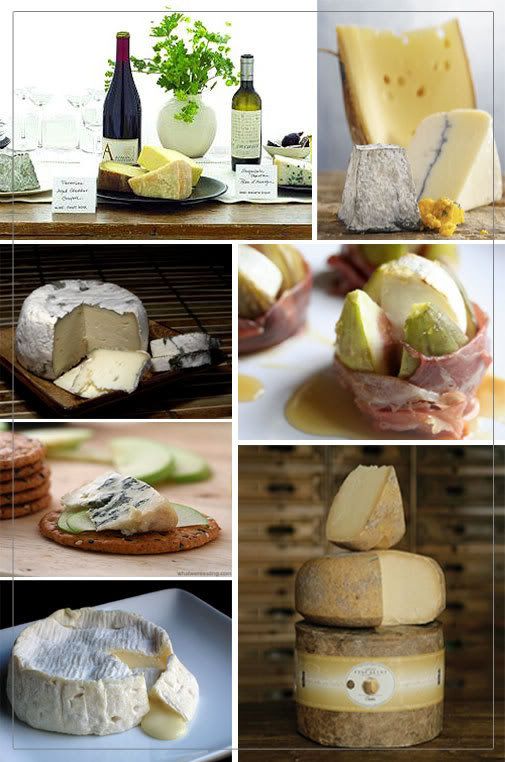Creamy, sharp, woody, mild…the choices are endless. And just like a fine wine or a good beer, Cheese should be appreciated. And there is no better way to experience cheese in its purest form than to hold a tasting. Here are a few things to keep in mind…
Temperature.
All cheese should be served at room temperature – in fact, experts suggest that cheese should never be stored in the refrigerator…although for most of us without a cellar or larder this is impossible. If cheese is too cold, it can be warmed between the fingers before tasting.
What to serve with your cheese?
Pairings should be selected based on the types of cheeses you’re serving. For example, the pungent and distinct flavor of a Saint Agur or Cabrales Blue Cheese is best paired with a sweet Port Wine or fruits such as figs, apples or melons. In addition to fruits and wines, cheeses can also be paired with vegetables like bell peppers, fennel and mushrooms; breads such as sliced baguette, foccacia and water crackers; and beverages such as premium ciders and beers. As a general rule of thumb pair local cheeses with regional beverages (wine, micro beers, etc).
Serving suggestions.
Count on one-half bottle of wine and 4 ounces of cheese per person if a main course has been served. If the cheese is the focus of the event, then 7-8 ounces per person is suggested.
Hand out a cheese journal.
Tasting a variety of cheeses, especially your first time, can be quite overwhelming. Each cheese has its own story – an origin, an age, flavor notes, preferred pairings, etc. Allow your guests to write about their experiences so they can remember them long after they leave your event.
Prepare the palette.
When doing a tasting, let your guests work their way up in strength. Start with a mild cheese and pair it with a light wine and slowly progress in strength and body throughout your tasting. The following progression (via Metro) is a good rule of thumb:
Fresh and goat cheeses
Flowered or washed rind soft cheeses
Semi-firm cheeses
Firm cheeses
Blue-veined cheeses
Hard cheeses
Keep it fresh.
Cheese should be cut just before serving to ensure freshness. If you’re doing a station, cheese should be displayed uncut.
Experiencing the cheese.
Look – See how the cheese was treated. Absorb the color of the cheese. Does it look dry? How does the texture look?
Feel – Pinch the cheese between your fingers and feel the texture. Get a feel for whether it is soft, crumbly, creamy, gooey.
Smell – As with any tasting, it’s important for the participants not to wear perfume or cologne as this affects the ability to smell and taste the cheese. Every cheese has its own unique scent. Be sure to smell both the rind and the cheese. It should be noted that the scent of the cheese doesn’t necessarily give away the taste.
Taste – This should be the last thing you do – after you’ve had a chance to look, smell, and touch the cheese you can loose yourself in the taste. Roll the cheese over the inside of your mouth, being careful not to chew it. Let it spread over all of your taste buds so you can enjoy all the notes. Keep in in your mouth – like a fine wine the taste of a good cheese will mature and evolve in your mouth.
Additional Resources.
Experiences:
Enjoy a wine & cheese lunch on the RAIL EUROPE while in Paris.
Fine Cheese Sources:
Fromages.com specializes in traditional French cheeses.
